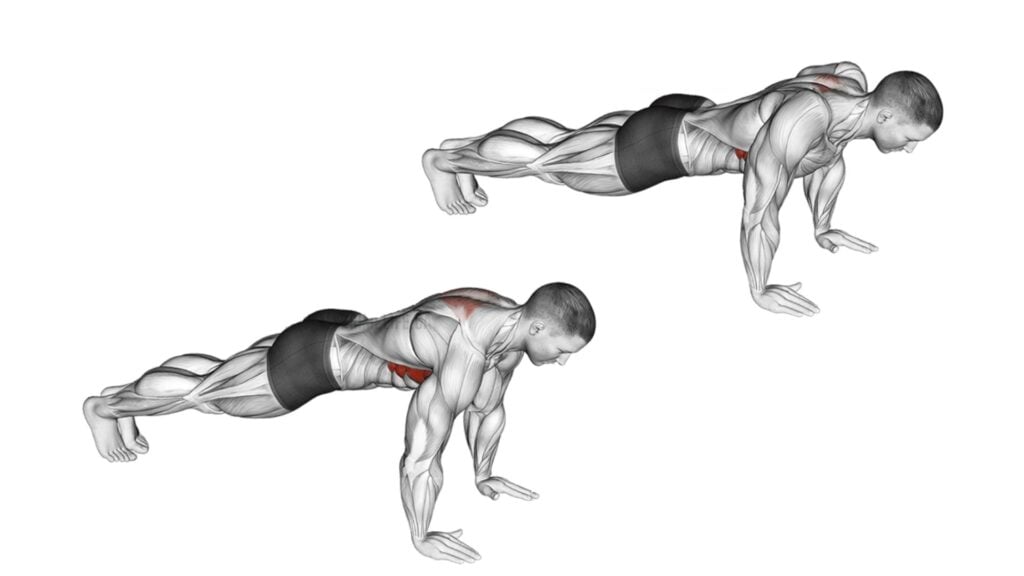Tabata HIIT
Tabata is a high-intensity interval training (HIIT) method developed by Dr. Izumi Tabata in the 1990s. It consists of 20 seconds of maximum effort exercise followed by 10 seconds of rest, repeated for 8 rounds, totaling 4 minutes per set. This training style enhances cardiovascular endurance, strength, and muscular endurance while maximizing calorie burn in a short period.Tabata workouts target multiple muscle groups depending on the exercises incorporated. Below is a breakdown of specific Tabata workouts along with the anatomical names of the target muscles, their functions, and calories burned per session.
Tabata HIIT Workouts, Target Muscles, and Calories Burned
1. Jump Squats
- Execution: Stand with feet shoulder-width apart, squat down, then explode upwards into a jump. Land softly and repeat.
- Target Muscles:
- Quadriceps Femoris (Front Thighs) – Responsible for knee extension.
- Gluteus Maximus (Buttocks) – Aids in hip extension and power generation.
- Hamstrings (Biceps Femoris, Semitendinosus, Semimembranosus) – Assist in knee flexion and hip extension.
- Gastrocnemius and Soleus (Calves) – Provide push-off power.
- Calories Burned: ~12-15 per minute
2. Push-Ups
- Execution: Assume a plank position, lower your body until your chest nearly touches the ground, then push back up.
- Target Muscles:
- Pectoralis Major (Chest) – Main driver of pushing motion.
- Triceps Brachii (Back of Upper Arm) – Assists in elbow extension.
- Deltoid (Shoulders, especially Anterior Head) – Provides stability and aids pressing.
- Rectus Abdominis and Obliques (Core Muscles) – Stabilize the body during movement.
- Calories Burned: ~8-11 per minute
3. Burpees
- Execution: Start in a standing position, drop into a squat, kick your feet back into a push-up position, return to squat, and jump explosively.
- Target Muscles:
- Rectus Abdominis and Transverse Abdominis (Core Muscles) – Maintain stability and control.
- Gluteus Maximus and Quadriceps – Power explosive movements.
- Pectoralis Major and Triceps Brachii – Engage in the push-up phase.
- Serratus Anterior (Upper Rib Muscles) – Assists in shoulder stability.
- Calories Burned: ~14-16 per minute
4. Mountain Climbers
- Execution: Assume a plank position and alternate bringing knees toward the chest in a running motion.
- Target Muscles:
- Rectus Abdominis and Obliques – Engage for stabilization and knee drive.
- Deltoids and Triceps Brachii – Support weight-bearing position.
- Hip Flexors (Iliopsoas and Rectus Femoris) – Drive knee movement.
- Gluteus Medius and Minimus – Assist in stabilization.
- Calories Burned: ~10-12 per minute
5. Kettlebell Swings
- Execution: Hold a kettlebell with both hands, hinge at the hips, and explosively swing the weight to shoulder height.
- Target Muscles:
- Gluteus Maximus and Hamstrings – Generate explosive hip thrust.
- Erector Spinae (Lower Back Muscles) – Maintain spinal stability.
- Deltoids and Trapezius (Upper Back Muscles) – Assist in swing control.
- Forearm Flexors and Extensors – Grip and control kettlebell motion.
- Calories Burned: ~12-15 per minute
6. High Knees
- Execution: Rapidly jog in place, bringing knees up to hip height.
- Target Muscles:
- Rectus Abdominis and Hip Flexors – Drive knees upward.
- Quadriceps and Hamstrings – Facilitate rapid movement.
- Gastrocnemius and Soleus (Calves) – Enable quick foot turnover.
- Tibialis Anterior (Front of Lower Leg) – Controls foot dorsiflexion.
- Calories Burned: ~10-14 per minute
7. Jump Lunges
- Execution: Start in a lunge position, explode upwards, switch legs in mid-air, and land in a lunge on the opposite side.
- Target Muscles:
- Quadriceps and Hamstrings – Power the jumping motion.
- Gluteus Maximus and Medius – Provide stability and strength.
- Gastrocnemius and Soleus – Absorb landing impact.
- Core Muscles (Rectus Abdominis and Obliques) – Maintain balance.
- Calories Burned: ~12-16 per minute
8. Plank to Shoulder Taps
- Execution: Hold a plank position, then alternately tap each shoulder while keeping the core engaged.
- Target Muscles:
- Rectus Abdominis and Transverse Abdominis – Maintain spinal stability.
- Deltoids and Triceps Brachii – Support upper body control.
- Gluteus Medius and Minimus – Assist in stabilization.
- Erector Spinae – Prevent excessive spinal movement.
- Calories Burned: ~6-8 per minute
Total Calories Burned in a Tabata Workout
The total calories burned depend on intensity, body weight, and fitness level. A typical 20-minute Tabata session can burn 240-400 calories, making it an efficient fat-burning workout.
Conclusion
Tabata HIIT workouts are a highly efficient way to build strength, endurance, and cardiovascular health in a short amount of time. By understanding the anatomical focus and caloric burn of each exercise, you can tailor workouts to specific muscle groups for optimal performance and weight management. Whether your goal is fat loss, athletic performance, or functional strength, incorporating Tabata HIIT can lead to significant physiological adaptations.








0 Comments